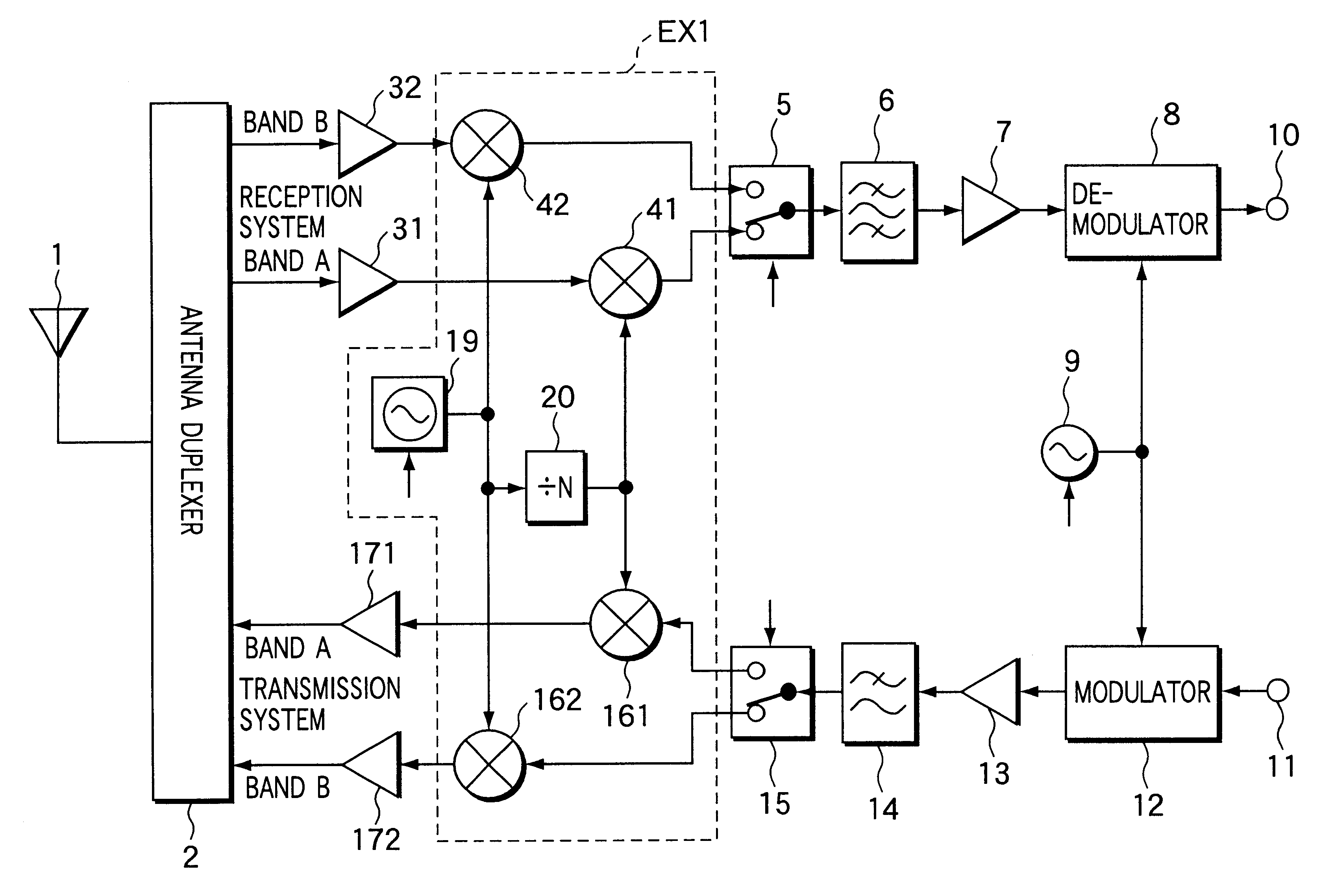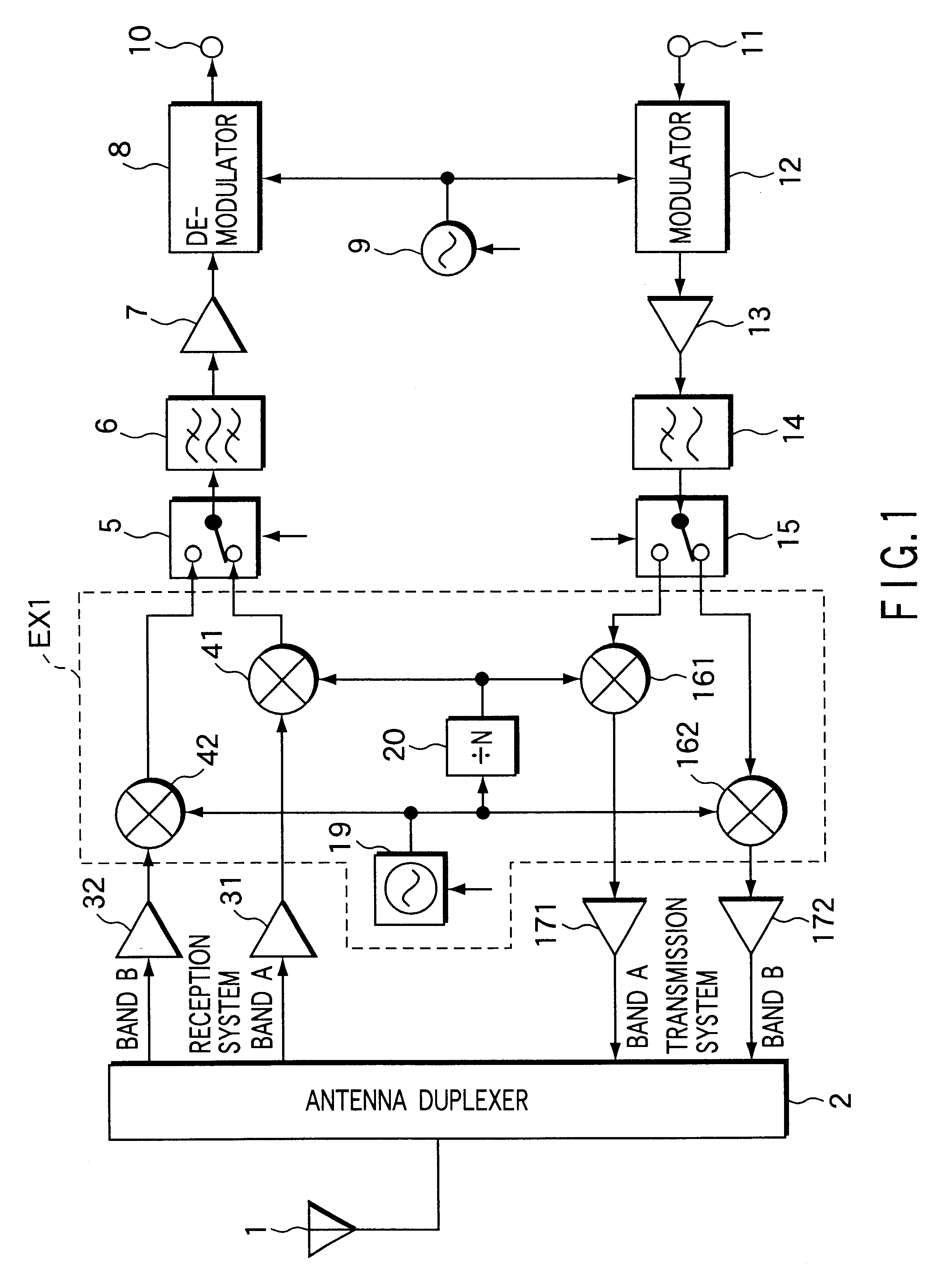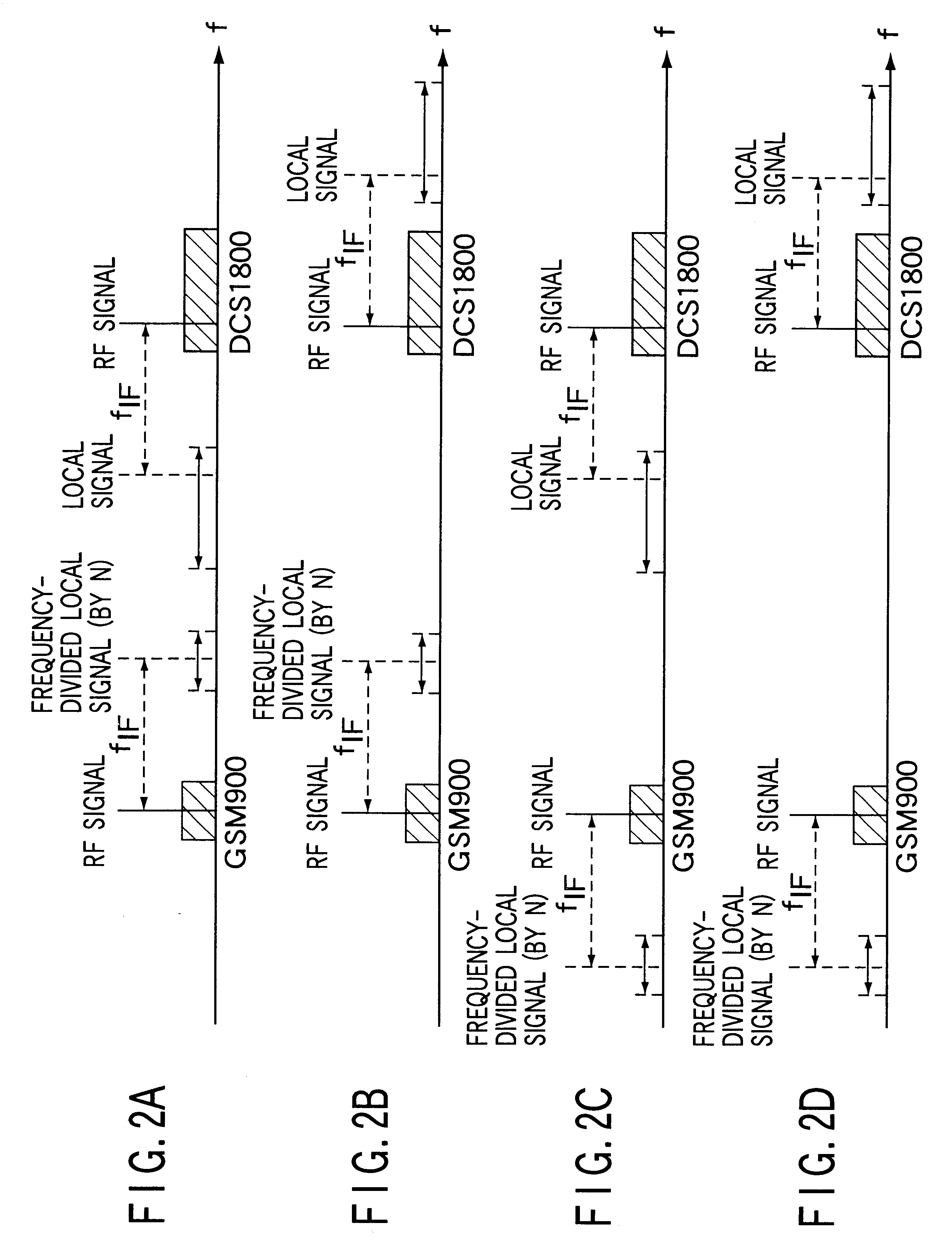Radio communication equipment
a technology of radio communication and equipment, applied in the direction of substation equipment, electrical equipment, demodulation, etc., can solve the problems of increasing power dissipation and existent problems, and achieve the effect of high speed withou and any increase in power dissipation of frequency synthesizers
- Summary
- Abstract
- Description
- Claims
- Application Information
AI Technical Summary
Benefits of technology
Problems solved by technology
Method used
Image
Examples
Embodiment Construction
Referring now to FIG. 1, there is shown an arrangement of radiocommunication apparatus according to an embodiment of the present invention. In this figure, like reference numerals are used to denote corresponding components to those in FIG. 1.
An antenna 1 is one that, as shown in FIG. 3, is capable of transmitting and receiving signals in frequency bands (bands A and B) which are allocated to two radiocommunication systems, respectively.
Signals in the two frequency bands received by the antenna 1 is divided in an antenna duplexer 2. The received signal in the band A is applied to a low-noise amplifier 31, while the received signal in the band B is applied to a low-noise amplifier 32.
The received signal in the band A is amplified by the low-noise amplifier 31, while the signal in the band B is amplified by the low-noise amplifier 32. The amplified received signals in the bands A and B are both applied to a frequency converter EX1. The frequency converter EX1 comprises first and secon...
PUM
 Login to View More
Login to View More Abstract
Description
Claims
Application Information
 Login to View More
Login to View More - R&D
- Intellectual Property
- Life Sciences
- Materials
- Tech Scout
- Unparalleled Data Quality
- Higher Quality Content
- 60% Fewer Hallucinations
Browse by: Latest US Patents, China's latest patents, Technical Efficacy Thesaurus, Application Domain, Technology Topic, Popular Technical Reports.
© 2025 PatSnap. All rights reserved.Legal|Privacy policy|Modern Slavery Act Transparency Statement|Sitemap|About US| Contact US: help@patsnap.com



